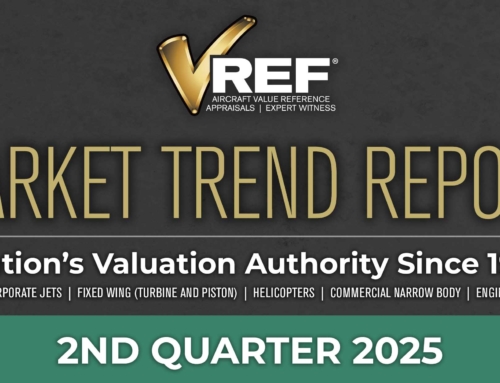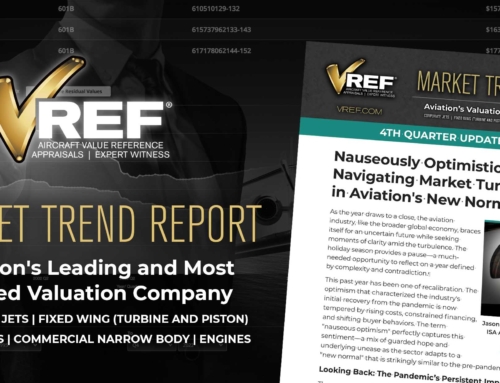The past three months have been interesting. Typically the 2nd quarter newsletter is focused on on-air shows and conferences. This year that is not the case. The world, as we know, came to a screaming halt in the first week of March. We have witnessed the entire commercial airline industry, travel and leisure sectors, restaurants, shopping malls, as well as tens of thousands of small businesses close. We have all been quarantined, literally watching the grass grow, and in many cases, our hair as well. We have all faced challenges in business and in our family life as we attempt to navigate this mess and come out stronger on the other side. Time will tell just how much permanent damage has been done to our social habits, but the one thing we can all agree on is that things have changed from the normal we knew some 90 days ago. As countries start to come back online, we are reminded of how vital aviation plays in the world economy.
Commercial airlines will face challenges in the next year, unlike anything they have ever met before, but they will survive. They might have smaller fleets, more condensed routes, fewer spokes, and fewer passengers, but they will come out of this, and it will make them stronger. The business traveler will undoubtedly become the guinea pig for the new normal and how the TSA and airlines will implement new regulations. The truth is, as time goes by, these new regulations will become more acceptable and, eventually, part of our routine. Do you remember the days of walking straight to your gate without any security? How about the first time you were told no liquids could be brought through security? Just like removing your shoes, the new hygienic regulations will become routine. The near future will be a battle between corporate liability, safety in the workplace versus productivity. Business aviation will be there to the rescue, unlike the great depression of 2009, the world will depend on private aircraft to propel the global economy. You will see major airlines shift to business aircraft to address their “VIP” clients willing to pay the premium. In Europe, the shift could be much more impactful as country borders, and differentiating regulations make it almost impossible to travel any other way.
VREF has been releasing webinars about COVID-19 and the impact it is having, and we encourage our subscribers to reach out and let us know if there are subjects you would like for us to cover in the future. These webinars are free to VREF subscribers as well, so check them out.
VREF recently partnered with CoFlyt, and they will be helping us bring the VREF Vault to market. The Vault is genuinely the first-ever digital filing cabinet for aviation. It was built on the blockchain, and it provides seamless access and active management of your aircraft, its records. The Vault allows you to provide access in realtime to any secured user to your account, including your lender, insurance agent, maintenance facilities, and your staff. We are launching the beta in a couple of weeks, and if you are interested in participating for free, please let me know at Jason@vref.com, and we will be happy to get you onboarded.
As we head into the summer like the improving weather, the economy will improve as well. As values continue to evolve, we will be there to report it. We are watching transactions, having numerous internal meetings about what we are seeing, and in many cases, not, and making sure that the aviation community is being informed. Values are, in some cases changing quickly, and to combat the need to stay informed more regularly, we created Tiers for subscriptions. Tier 1 will continue the VREF tradition of pushing data out quarterly, but Tier 2 and Tier 3 will provide monthly and weekly updates.
Additionally, the new software allows us to integrate numerous features and data sets that were only a dream in the old system. Airframe and Engine program Buy-in estimators, complete backgrounds of ownership by serial number, as well as a dedicated propeller and floats database, will be coming in the next few months. If there is something you want to see, let us know, and we can implement it.
I want to take this opportunity to inform the buying public about USPAP, what it is, and why it is so crucial for appraisers to adhere to it. Many of you have seen the acronym before, but do you know what it means and how it protects you? USPAP is the Uniform Standards of Professional Appraisal Practice, and Congress adopted it in 1989. The purpose of USPAP is to promote and maintain a high level of public trust in the appraisal practice by establishing requirements for appraisers. It is essential that appraisers develop and communicate their analysis and opinions and conclusions to intended users of their services in a manner that is meaningful and not misleading.
The Appraisal Standards Board promulgates USPAP for both appraisers and users of appraisal services. The appraiser’s responsibility is to protect the overall public trust, and it is the importance of the appraiser that places ethical obligations on those who serve in this capacity. USPAP reflects the current standards of the appraisal profession.
These are the ethical and performance standards an accredited appraiser must follow. Compliance is required for both real and personal property, and the standards are updated every two years. If you are an accredited appraiser with the ASA, ISA, or CNA, then you must complete USPAP training on an annual basis. So how do you know if the appraiser you are hiring is USPAP compliant? More importantly, what difference does it make?
An appraiser is a fiduciary. A fiduciary is a person who holds a legal or ethical relationship of trust with one or more other parties. Typically, a fiduciary prudently takes care of money or other assets for another person. That means he/she has no bias, no interest in the property being appraised, and most importantly, the appraiser puts your needs before their own. Recently, I completed my 7-hour update training, and one of the Back to Basics topics was to go over the definition of what an appraiser is. An appraiser is one who is expected to perform valuation services competently and in a manner that is independent, impartial, and objective. I bet many of you would have come close to the same definition on your own, but when is an appraiser not an appraiser? If you have ever had the pleasure of buying a new or used car, you have experienced the appraiser who is not an appraiser. Every car dealer has someone if not multiple people capable of placing a value on the vehicle; these people are there to protect the interest of the dealership, not the buyer. Think of it another way, if you go to that dealer and ask them to tell you what your vehicle is worth on trade-in, is the dealer’s appraiser being independent and impartial? We always suggest that people ask for the USPAP compliance statement, but verify it states the appraiser had no interest in the property being appraised. It is up to you to protect yourself, and if you ever need help, just let us know.
Communication is paramount to customer service, and you can reach VREF online through the website, by phone, email, and if you want to chat by text, that is fine as well. In these challenging times, we will assist in any way we can.
As always thank you for your support,
Jason Zilberbrand, ASA, CAA, ISA AM, AOA AM, MRAeS; Accredited Senior Appraiser, accredited by the American Society of Appraisers (ASA).





